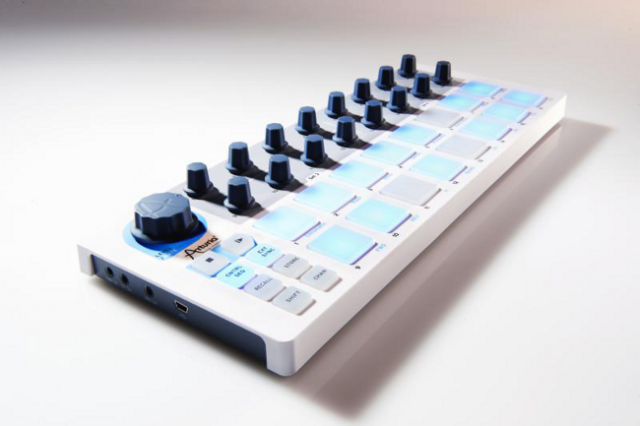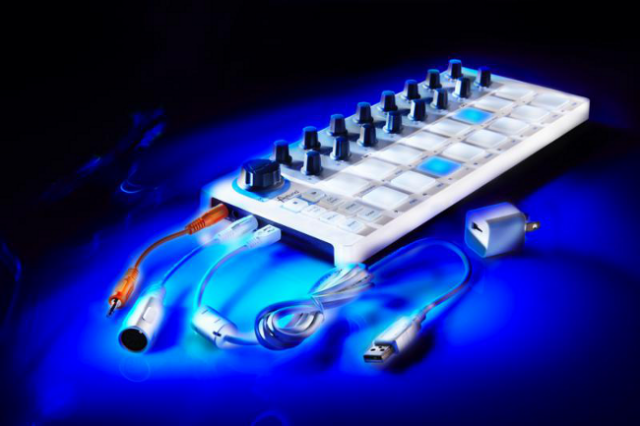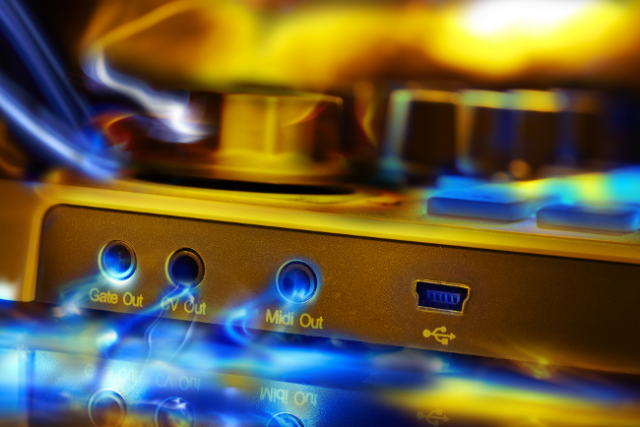Every new season brings new music tools. Some of these designs, of course, are splashy and grab headlines. Some just look like no-brainers that will see heavy use in your work.
Arturia’s BeatStep stood out at the recent NAMM trade show as just an insanely-great use of a hundred bucks, in a tiny box that sort of does everything you’d want.
It’s a pad controller. But it’s also a step sequencer. It connects to your computer via USB. But it also does analog CV and MIDI (via breakouts) when your computer isn’t around. It works as a controller. It works with an iPad. It can be a clock source.
In short, it’s mobile control and step sequencing for pretty much anything you own, with or without a keyboard.
We’ve already heard from a lot of readers who were drawn to it, many of them already wanting something just like this. Now, we have some extensive tutorial videos from Arturia that show how it works, plus some questions and answers from the makers.
First, official pricing and availability is end of March – direct through Arturia or dealers – at US$129 / 99€. That’s US$99 street.
Expect a full review, but Glen Darcey at Arturia already answers some of our questions:
CDM: What’s the MIDI implementation for the step sequencer like?
Arturia: You have access to the sequencer via SysEx. Our librarian, MIDI Control Center, is being updated to allow users to edit their sequences. The step sequencer can be set to its own MIDI channel for output.
The product description mentions being able to switch between software and external gear control in the same setup. So you switch modes – how does it function when you’re using two modes at once?
The Sequencer has its own MIDI channel and each pad and knob in controller mode can be set to their own channel.
You can start and stop the sequencer from the transports in either mode. The sequencer will run in the background when you are in controller mode so you just press the one button and you switch from one mode to the next.
I’m correct in understanding that the hardware can run in standalone mode, sequence CV/MIDI without being connected to a computer?
Yes, you need to power the unit via USB. This can be a USB charger…just needs to have enough current (over 500 mA). Then you can use it with CV gate and MIDI.
Any other tips you can give us?
The user can set the sequence length from the hardware.
We have other features like Swing, Gate Time and Legato, that can be accessed in the editor. ( we are considering some button combinations to allow access to these from the hardware but we don’t want to add them if it makes the user experience bad, you know press SHIFT + MIDI CH + PLAY + stand on left foot and turn knob 5 counter clockwise 3 clicks).
We are in the final stages of the firmware and are adding little features and other tweaks to make it all work better as we discover different way to use it but I think you will find it a lot of fun.
Full specs:
MIDI controller Mode – RED LED MODE
Step Sequencer mode – BLUE LED MODE
16 velocity and pressure sensitive pads
16 encoders
16 MIDI Controller presets
16 Sequence presets
Works with MIDI Control Center Editor
Internal and External clocking
CV outputs
USB I/O
MIDI output
iPAD compatibility (using camera connection kit)
Transports can send MIDI CC or MMC
Kensington Lock
Standalone MIDI or CV operation when powered via standard USB power adaptor
USB Class compliant (no drivers)
The MIDI implementation is fairly advanced – think everything from Program Change to NRPN/RPN and MMC play/stop, not just MIDI CC (frankly, much more than almost anyone needs on these sorts of things).
There are also various step modes:
Forward
Reverse
Alternate > <
Random
Time divisions: ¼th, 1/8th, 1/16th, 1/32nd
Pattern length can be set from 1 - 16 steps, and you can set swing to 50-75%. (Oddly, these things are often far more advanced in MIDI implementation than they are in rhythm - that'll be a discussion for another day.)
BeatStep @ Arturia
Intro:
And for a clearer sense of how this works, Arturia has posted tutorial videos, covering the basics but also how you might work with external MIDI and analog CV hardware:
Glen also recorded a video explaining a bit of the thinking behind the design for distributor Source at NAMM (via Synthtopia):


